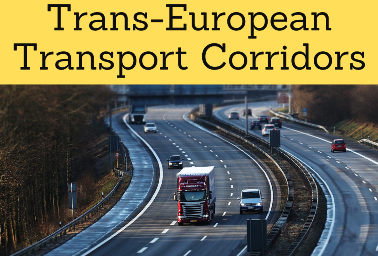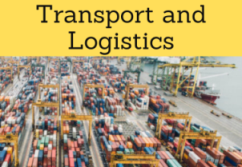China-Mongolia-Russia Economic Corridor
Silk Road: China-Mongolia-Russia Economic Corridor (Road Transport)
The China-Mongolia-Russia Economic Corridor begins in the port of Tianjin (China) and heads northwest, passing through Beijing before entering Mongolia (Erlianhaote border post). The corridor heads through Mongolia before entering Russia along the Trans-Siberian Express at Ulan Ude.
The China-Mongolia-Russia Economic Corridor is integrated into the vision of the new Silk Road.
- Introduction to the China-Mongolia-Russia Economic Corridor (the Prairie Route)
- Main features of the China-Mongolia-Russia Economic Corridor
- The Corridor and the:
- The China-Mongolia-Russia Economic Corridor: a key project of the New Silk Road
- The role of the Shanghai Cooperation Organization in the Corridor
- Advantages for enterprises from China, Russia, Mongolia and Europe
Sample - China-Mongolia-Russia Economic Corridor


The Subject «China-Mongolia-Russia Economic Corridor» is included within the curriculum of the following academic programs at EENI Global Business School:
Transportation Courses: Road Transport, Railway, Air, Multimodal.
Certificate in International Transport

Masters: International Transport, International Business.


Languages:  .
Summary in
.
Summary in  Corredor China-Mongolia-Rusia
Corredor China-Mongolia-Rusia
 Corridor Chine-Mongolie-Russie
Corridor Chine-Mongolie-Russie  Corredor China-Mongólia-Rússia.
Corredor China-Mongólia-Rússia.

- Russian Name: Талын зам
- Chinese name: 草原 之 路
Advantages of the China-Mongolia-Russia Economic Corridor for the region
- Taking advantage of this corridor, the products and raw materials (copper, coal and gold) of Mongolia and Siberia are exported from the Tianjin port
- For the northeast provinces of China (Heilongjiang, Jilin and Liaoning), this corridor represents the shortest route to Europe
- North Korea could access this corridor
- For the European enterprises it is an important access route to Mongolia and China

Mongolia can become a key logistics centre: Asia-Russia-Europe.
Tianjin-Beijing-Erenhot section
- China (G55 Road): Tianjin (Port), Beijing, Zhangjiakou, Erenhot (China-Mongolia Border)
- Estimated time: 8 h 16 min
- Distance (773 km)
Rail transport.
- Several container trains are already using the China-Mongolia-Russia Economic Corridor
- Mongolia-Brest train (Mongolia-Belarus)
- Zhengzhou-Hamburg train (China-Mongolia-Germany)
Logistics infrastructures under development.
- Tavan Tolgoi-China Border railway project. In Tavan Tolgoi is the largest coal mine in Mongolia with the Chinese border
- Railway project to link Choilbasan with Ereentsav, near the eastern border of Russia and Mongolia
- Sainshand-Ereentsav railway crossing project, Nomrog, Bichil
Tripartite cooperation areas under the China-Pakistan Economic Corridor
- Logistics infrastructure
- Cooperation in the industrial sector
- Development of border points
- Trade Facilitation and merchandise inspection procedures
- Cooperation in the energy sector, environment
- Cooperation in education, science and technology
- Farming
Asian regional economic communities related to the China-Mongolia-Russia Economic Corridor
- Central Asia Cooperation (CAREC): Afghanistan, Azerbaijan, China, Kazakhstan, Kyrgyzstan, Mongolia, Pakistan, Tajikistan, Turkmenistan and Uzbekistan
- Shanghai Cooperation Organization: Kazakhstan, China, Kyrgyzstan, Russia, Tajikistan and Uzbekistan
- Organization for Cooperation between Railways (OSJD): China, Mongolia, Russia
- China is a member of:
- Russia is a member of:
- Eurasian Economic Union
- Commonwealth of Independent States
- Black Sea Cooperation
- European Union-Russia
- Council of the Baltic Sea States
- Organization for Security and Cooperation in Europe (OSCE)
- China and Russia are members of:
- APEC
- Africa-BRICS Countries Cooperation
- Mongolia is a member of the Asia-Africa Growth Corridor
Related Trade Agreements
- China
- Chinese Trade Agreements: ASEAN, Singapore, Pakistan, New Zealand, Peru, Chile, the EU, Andean Community
- Asia-Pacific Trade Agreement: Bangladesh, China, India, Mongolia and Sri Lanka
- Russia
- Trade Agreements of Russia: ASEAN, the EU, Andean Community, Armenia, Belarus, Azerbaijan, Georgia, Kyrgyzstan, Serbia, Moldova, Ukraine and New Zeeland
- Free Trade Agreement between Russia, Belarus and Kazakhstan
- Customs Union Russia-Vietnam
- Russia has a Trade Agreement with Cameroon
Main Asian institutions related to the Corridor
- Boao Forum for Asia
- Asia Cooperation Dialogue
- Economic Commission for Asia (ESCAP)
- Asian Development Bank
- Colombo Plan
The main Religions of the region of the China-Mongolia-Russia Economic Corridor are:
The China-Mongolia-Russia Economic Corridor belongs to:
- Central Eurasian Economic Area
- Sinic Economic Area
Related Corridors to the Silk Road
- Bangladesh-Myanmar Logistics Corridor
- Asia-Africa Logistics Corridor
- China-Central Asia-Western-Asia Logistics Corridor
- Almaty-Bishkek Logistics Corridor
- India-Afghanistan Logistics Corridor
- Islamabad-Istanbul Logistics Corridor
- Trans-Caspian Logistics Corridor
- North-South Corridor (India-Russia)
- East-West Corridor (Myanmar-Vietnam)
- China-Pakistan Logistics Corridor
- Afghanistan-Turkey Logistics Corridor
- Europe-Caucasus-Asia Logistics Corridor
- Corridor of the Ashgabat Agreement
- Kyrgyzstan-Iran Logistics Corridor
- Nanning-Singapore Logistics Corridor

(c) EENI Global Business School (1995-2025)
Top of this page









 WhatsApp
WhatsApp